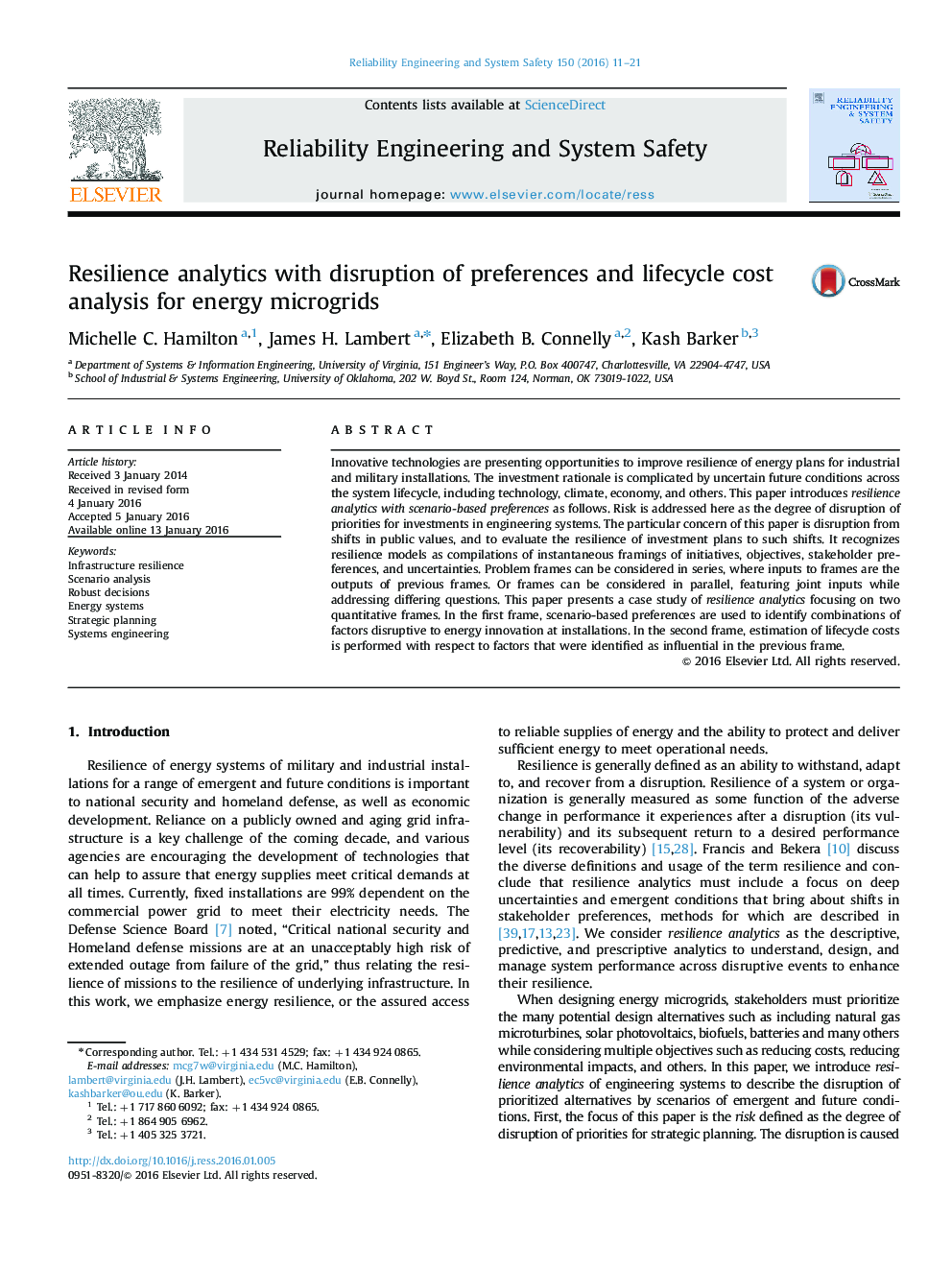| کد مقاله | کد نشریه | سال انتشار | مقاله انگلیسی | نسخه تمام متن |
|---|---|---|---|---|
| 806695 | 1468220 | 2016 | 11 صفحه PDF | دانلود رایگان |
• Develops method for resilience analytics of system plans with deep uncertainties.
• Describes economic, regulatory, environmental, technology, and other stressors.
• Demonstrates that stressors disrupt the prioritization of microgrid initiatives.
• Describes how overlapping model frames emphasize various aspects of the mission.
• Presents a two-part demonstration: Initiatives prioritization and lifecycle costs.
Innovative technologies are presenting opportunities to improve resilience of energy plans for industrial and military installations. The investment rationale is complicated by uncertain future conditions across the system lifecycle, including technology, climate, economy, and others. This paper introduces resilience analytics with scenario-based preferences as follows. Risk is addressed here as the degree of disruption of priorities for investments in engineering systems. The particular concern of this paper is disruption from shifts in public values, and to evaluate the resilience of investment plans to such shifts. It recognizes resilience models as compilations of instantaneous framings of initiatives, objectives, stakeholder preferences, and uncertainties. Problem frames can be considered in series, where inputs to frames are the outputs of previous frames. Or frames can be considered in parallel, featuring joint inputs while addressing differing questions. This paper presents a case study of resilience analytics focusing on two quantitative frames. In the first frame, scenario-based preferences are used to identify combinations of factors disruptive to energy innovation at installations. In the second frame, estimation of lifecycle costs is performed with respect to factors that were identified as influential in the previous frame.
Journal: Reliability Engineering & System Safety - Volume 150, June 2016, Pages 11–21
